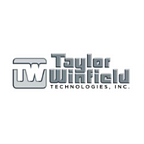Resistance Welding : Precision Unlocked
Taylor-Winfield-Technologies
As the world of metal fabrication continues to evolve, the spotlight is increasingly on welding technologies that marry efficiency with reliability. At the forefront of this revolution are resistance welding machines, sophisticated devices that harness electrical resistance to forge localized heat, ushering in a new era of robust and enduring welds. In this comprehensive exploration, we embark on a journey to delve deeper into the intricacies of resistance welding machines. We will uncover their unique characteristics, shed light on the advantages they hold over alternative welding methods, and provide invaluable insights into the considerations essential for selecting manufacturers with a track record of excellence.
Understanding Resistance Welding Machines:
The core principle behind resistance welding machines lies in their ability to wield electrical resistance as a tool to generate precise heat at the very points where metals are destined to seamlessly meld. This fusion of metal components, achieved through the delicate dance of heat and applied pressure, unfolds through two primary methods:
Spot Welding:
— This methodical process involves the strategic application of a concentrated electric current at precise contact points between metal sheets. The resulting localized heat elegantly fuses the sheets, giving rise to spot welds that have found ubiquitous application in industries like automotive and sheet metal fabrication.
2. Seam Welding:
— Seam welding, a continuous welding ballet, sees wheel-shaped electrodes pirouetting along the joint, creating seamless welds. This technique proves particularly advantageous for the fabrication of tubes, pipes, and cylindrical structures.
Benefits of Resistance Welding Machines:
Speed and Efficiency:
— One of the standout features of resistance welding is its remarkable speed, rendering it highly suitable for scenarios demanding high-volume production. The rapid heating and cooling cycles play a pivotal role in significantly reducing overall production times, thereby enhancing efficiency and productivity.
2. Consistent and High-Quality Welds:
— The hallmark of resistance welding lies in the controlled application of heat and pressure, ensuring welds of unparalleled consistency and high quality. This precision guarantees uniformity, resulting in connections that are not just strong but reliably so.
3. Environmentally Friendly:
— A departure from some welding methods that involve consumables or emit harmful fumes, resistance welding stands out as a clean process with minimal environmental impact. This aligns seamlessly with the ethos of modern sustainability practices.
4. Versatility in Material Compatibility:
— The versatility of resistance welding machines is noteworthy, capable of seamlessly welding a diverse range of materials, including different metals and alloys. This adaptability expands the horizons of applications across a myriad of industries.
5. Reduced Heat-Affected Zone (HAZ):
— Another feather in the cap of resistance welding is its solid-state nature, minimizing the heat-affected zone. This not only preserves the intrinsic properties of the material but also mitigates the risk of distortion or degradation during the welding process.
Comparative Analysis with Other Welding Machines:
Friction Welding Machines:
— Advantages of Resistance Welding:
— Resistance welding exhibits superior speed, making it more conducive for scenarios demanding high-volume production.
— The solid-state nature of resistance welding minimizes the risk of material distortion, a particularly crucial factor in intricate applications.
2. Arc Welding Machines:
Advantages of Resistance Welding:
— In comparison to certain arc welding methods, resistance welding ensures higher productivity in mass production settings.
— The minimized heat-affected zone in resistance welding contributes to better material integrity, a critical factor across various applications.
Key Considerations When Choosing Manufacturers:
Expertise and Reputation:
The foundational element in the selection process is identifying resistance welding machine manufacturers with a proven track record in the design and production of resistance welding machines. Established expertise and a positive reputation serve as beacons, guiding towards the assurance of quality and reliability.
2. Customization Options:
The mark of a trustworthy manufacturer lies in their ability to offer customization options, tailoring the machine to meet specific industry needs. This versatility enhances the utility and effectiveness of the machine across diverse applications.
3. Technology and Innovation:
Opting for manufacturers at the vanguard of technological advancements in resistance welding ensures access to innovations that can elevate efficiency, precision, and overall performance.
4. Service and Support:
The consideration of manufacturers that provide comprehensive after-sales service and support is paramount. A responsive support system ensures minimal downtime and optimal machine performance throughout its operational life.
5. Compliance and Certification:
— Ensuring that the manufacturer adheres to industry standards and possesses relevant certifications is a non-negotiable aspect. Compliance with quality and safety standards is pivotal for equipment reliability and longevity.
Conclusion:
In conclusion, resistance welding machines emerge as stalwarts of efficiency and reliability in modern metal fabrication. Their exceptional speed, consistency, versatility, and environmentally friendly attributes make them indispensable across various industries. When juxtaposed with alternative welding methods, such as friction welding machines or arc welding machines, resistance welding stands out as a robust and efficient choice, especially for high-volume production and applications prioritizing material integrity. As industries navigate their welding needs, selecting reputable manufacturers becomes a linchpin. By prioritizing expertise, customization options, technological innovation, and responsive support, businesses can invest in resistance welding machines that not only meet but exceed their expectations. In doing so, they contribute to the creation of seamless bonds in the intricate tapestry of modern metal fabrication.
